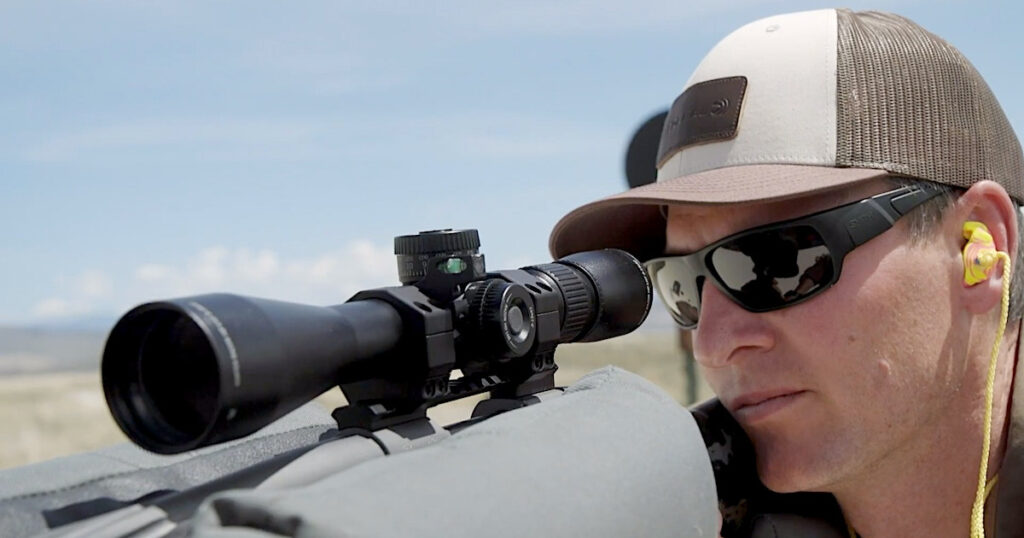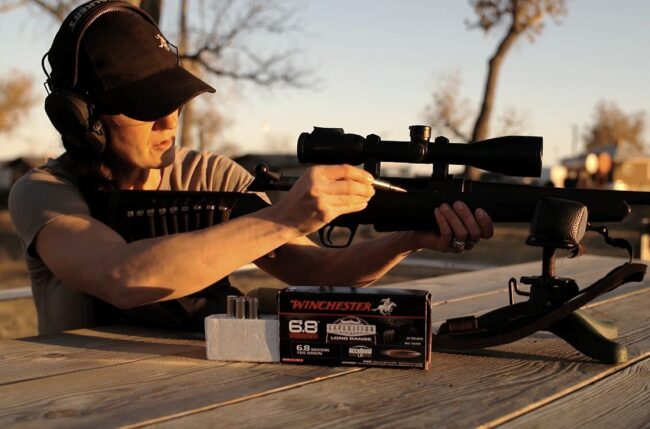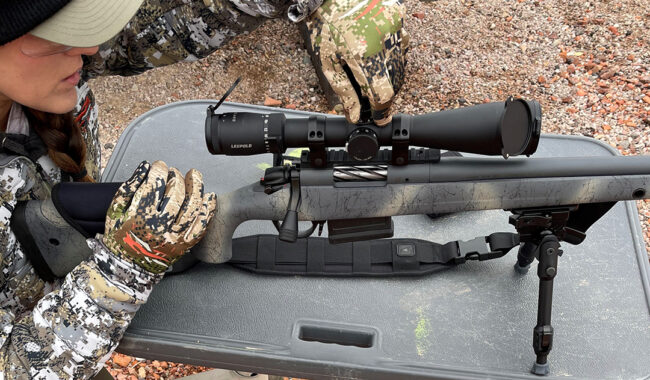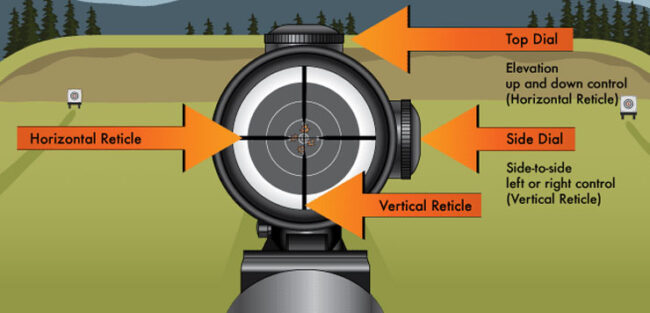How to Sight a Rifle – Preparing your Firearm for Accurate Shooting

Source: themeateater.com
Sighting a rifle is an essential skill for shooters, ranging from seasoned marksmen like the experienced gun professionals in Arms Directory, to novices entering the world of firearms.
Precision and accuracy hinge on the careful alignment of a rifle’s sights with its point of impact. This guide will delve into the significance of sighting-in a rifle, the critical steps in preparing your firearm for accurate shooting, and an in-depth tutorial on zeroing your rifle for optimal performance.
Why Is Sighting-In a Rifle Important?

Sighting-in a rifle is a critical aspect of firearm proficiency, integral to the pursuit of accuracy and precision in shooting. The primary goal is to align the sights with the rifle’s point of impact, ensuring that where you aim is precisely where your bullets will land. This meticulous process holds paramount importance for various shooting endeavors, be it hunting, competitive shooting, or tactical scenarios.
The significance of sighting-in a rifle lies in its direct impact on gun safety, effectiveness, and ethical firearm use. Without proper alignment, shooters risk missing their intended targets or, worse, hitting unintended ones. Achieving accuracy through sight-in procedures enhances shooter confidence, reducing the likelihood of stray shots and ensuring a responsible approach to firearm handling.
Setting up Your Rifle for Sighting

Before embarking on the precision-driven journey of sighting a rifle, meticulous setup is paramount to ensure optimal performance. Start by securing your rifle on a stable platform or shooting rest, minimizing any potential sources of error introduced by unsteady positioning. The stability of the setup is crucial for accurate shots, allowing you to focus solely on refining your sight alignment.
Equally important is the selection of appropriate ammunition for your rifle. Matching the right ammunition to your firearm is essential for consistent performance, as different bullet weights and types can significantly influence trajectory and accuracy. Ensure your rifle is in prime working condition, conducting thorough maintenance checks to guarantee all components are functioning correctly.
Zeroing the Rifle

Zeroing a rifle is a meticulous process that ensures the alignment of your sights with the point of impact, setting the stage for accurate and reliable shooting. This step-by-step guide will walk you through the zeroing process, providing a comprehensive understanding of each element involved.
1. Choosing a Suitable Target
Start by selecting a target, typically placed at a distance of 100 yards. This standard distance allows for effective zeroing and is widely accepted as a baseline for many rifle configurations. Ensure the target is visible and provides a clear point of aim.
2. Stable Rifle Mounting
Before initiating the zeroing process, secure your rifle on a stable platform or shooting rest. This eliminates potential human-induced errors and ensures that your adjustments accurately reflect the rifle’s performance. A consistently stable setup is crucial for reliable zeroing.
3. Initial Shots and Group Analysis
Fire a series of shots at the chosen target, aiming for consistency in your shooting technique. Examine the grouping of your shots on the target, paying close attention to the center of the cluster. The center of this group represents the initial point of impact.
4. Windage Adjustment
To begin the zeroing adjustments, focus on windage—the horizontal alignment of the sights. If your shots are consistently hitting to the left or right of the desired point of aim, make windage adjustments accordingly. Most rifles feature a turret on the scope for this purpose, allowing you to move the reticle left or right.
5. Elevation Adjustment
Once windage is in check, shift your attention to elevation—the vertical alignment of the sights. If your shots are consistently hitting above or below the desired point of aim, adjust the elevation settings. Similar to windage, the elevation adjustments are usually made using the turret on the scope, moving the reticle up or down.
6. Iterative Process
Zeroing is an iterative process that involves making adjustments, firing additional shots, and analyzing the grouping until the point of aim aligns precisely with the point of impact. Patience and attention to detail are key during this phase, as small, controlled adjustments lead to more accurate results.
7. Confirming Zero
After making initial adjustments, confirm your zero by firing additional rounds at the target. Ensure that your shots consistently hit the desired point of aim. If necessary, make minor refinements to fine-tune the zero. Regularly confirming your zero is crucial, especially when conditions or ammunition change.
8. Understanding Trajectory and Distance
Consider the trajectory of your bullets and how it relates to different distances. Understanding your rifle’s trajectory allows you to make informed adjustments when shooting at varying ranges, ensuring consistent accuracy.
9. Consistency is Key
Throughout the zeroing process, maintain consistency in your shooting technique, including factors like body position, trigger control, and breathing. Consistency reduces variables, making it easier to diagnose and correct any issues during the zeroing process.
10. Final Verification
Once you are satisfied with your zero, perform a final verification by firing a few rounds to ensure continued accuracy. This step instills confidence in your rifle’s performance and allows you to rely on its accuracy in real-world scenarios.
Adjusting Windage and Elevation

Fine-tuning the windage and elevation of your rifle’s sights is a crucial step in achieving pinpoint accuracy, accounting for both environmental factors and the unique trajectory of your bullets. Windage, controlling horizontal alignment, becomes paramount when mitigating the lateral influence of wind on your shots. Make incremental adjustments to your scope or sights based on the observed direction of the wind during shooting. This meticulous process hones in on a true point of aim, compensating for the lateral forces that can veer bullets off course.
Elevation adjustments, managing vertical alignment, are instrumental in accommodating changes in bullet drop at varying distances. Understanding your rifle’s ballistics and the specific characteristics of your ammunition allows you to make precise adjustments to ensure that your shots consistently hit the intended point of impact.
This fine-tuning not only considers bullet drop but also factors in the effects of atmospheric conditions, ensuring your rifle remains calibrated for peak performance in diverse shooting environments. By mastering the art of adjusting windage and elevation, you refine your marksmanship skills, making you a more effective and versatile shooter.
Confirming Zero
Once you’ve completed the initial zeroing process, confirming that your rifle is consistently hitting the desired point of aim is a crucial step in ensuring accuracy and reliability. This verification phase involves testing the accuracy of your sights and making any necessary adjustments to fine-tune your zero.
Begin by firing additional rounds at the target, paying close attention to the grouping of shots. Analyze whether the shots consistently land where you aim, validating the effectiveness of your zeroing adjustments. If you notice any deviations from the desired point of impact, make minor corrections to refine your zero.
Conclusion
In conclusion, mastering the art of sighting a rifle is a fundamental skill that elevates a shooter’s precision. The step-by-step guide to zeroing ensures that your sights are accurately aligned with the point of impact, fine-tuning windage and elevation for diverse conditions. Regularly confirming your zero reinforces confidence in your rifle’s accuracy. Ultimately, consistent practice of these principles enhances marksmanship, making you a skilled and responsible shooter prepared for various scenarios.

 15 Essentials When Camping With Kids
15 Essentials When Camping With Kids  5 Benefits of Camper Van Holidays
5 Benefits of Camper Van Holidays  Is Wild Camping Legal in the Netherlands?
Is Wild Camping Legal in the Netherlands?  Top 7 Family-Friendly Camping Sites in Queensland
Top 7 Family-Friendly Camping Sites in Queensland  A Complete Guide to Personalized Gift Ideas That Carry Real Thought and Value
A Complete Guide to Personalized Gift Ideas That Carry Real Thought and Value  Neuschwanstein Castle From Munich Day Trip Guide
Neuschwanstein Castle From Munich Day Trip Guide  Oxford ─ England’s City of Dreaming Spires
Oxford ─ England’s City of Dreaming Spires  Creative Gift Ideas for Anime Lovers and Collectors: Unique Picks You Will Adore
Creative Gift Ideas for Anime Lovers and Collectors: Unique Picks You Will Adore